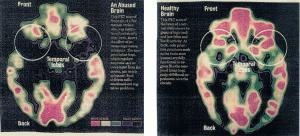Introduction: Facebook information sheet, Paperwork for child field trips Commonly Used Child Care Centers and information, including directors/owners name, phone numbers and prices
Safety Unit: To use and understand safety procedures for children in the home and child care centers
- Kids and poison Power-point: Kids and Poisons, Notes done in class: Kids and Poison activity.
- Handling Childhood Emergencies, Notes done in class: handling childhood emergencies activity sheet
- Caregiver to the rescue Activity Sheet in-class assignment CaregivertotheRescue
- Childhood Safety Chapter 20 posters (group work) Alternate make-up assignment: safetywkst_000
Families: To explore and examine the needs any types of families.
- In class reading about the Family Today’s Article Article
- Chapter 3 Printable worksheet: chapter3
- Chapter 3 printable reading: chapter3reading
- Functional vs. dysfunctional PPT
- Functional/Dysfunctional in class group assignment
Parenting: To establish family values and help create strong families.
- Parenting Styles PPT
- Parenting Styles PPT Answer sheet
- parenting survey
- Parenting Styles Guided Practice (graded assignment)
Child Discipline: To ensure that children can live happily and effectively in society through proper teaching strategies.
- Child Abuse Article Reading and Sharing -See Ms Schlemmer for make-up
- Breaking the Cycle of Violence Worksheet
- DisciplineArticle_000Summary in the computer lab
- Child Abuse Revised KENZIE with facts
Multiple Intelligence: to be able to identify different learning styles and apply specific learning strategies to help encourage children to learn and develop.
- MultipleIntelligencesPowerPointNEW-1
- Multiple Intelligence PPT notes Interactive in class
- Multiple-Intelligences-Inventory-No-Existential
Speaker Information:
- LeeAnn Pancharoen, M.Ed.
Health Educator
Planned Parenthood of the Heartland
5631 S. 48th St
Lincoln NE 68516
p: 402.441.3323
f: 402.441.3319
leeann.pancharoen@ppheartland.org
- Carrie Erks
Social Worker/Preschool
Lincoln Public School
cerks@lps.org
402.436.1000
Unit: Physical Development Objective – Be able to compare and contrast the average physical development skills of children from age 4-12 including motor skills, nutrition, sleep and posture or size.
- Snowflakeactivity
Chapter 13 & 16
The Development Child Book- Food Program – see me for the handout
- Child Care Center.pdf Nutritional Menu (for the children)
- Physical Development PPT and Think Sheet (see me)
Intellectual Development – Be able to compare and contrast the average brain development from age 4-12 year old children and understand the learning process.
- Literacy Review
- Literacy Review PPT
- Storybook rough draft
- Storybook Evaluation
- See me for detail on the children’s book
- Intellectual Development think sheet (see Me)
- FreudIntoVocab – Freud PPT
- ericksonppt2 – Erickson PPT
- jeanpiaget
Title XX paperwork – See me for details
Social Development – To compare and contrast the average social and emotional development of children between the ages 4-12
- Emotional and Social Development worksheet
- Emotional & Social PPT w/ note sheet (see me)
Portfolio Document – Print this and keep it in the front of the binder for the evaluation process.
